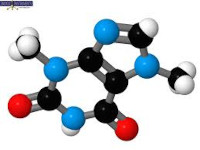Improving the Solubility of Fenofibric Acid via Multicomponent Crystal Formation with Theobromine Coformer
Main Article Content
Abstract
Fenofibric acid (FA) is a class II biopharmaceutical system drug, a potential drug for
antihyperlipidemic. FA lowers low-density lipoprotein (LDL) and triglyceride levels and
increases high-density lipoprotein (HDL). Due to its low solubility, the bioavailability of FA is
also low. To overcome the undesirable effects of these biopharmaceutical properties, this study
focused on improving the solubility of FA in the form of FA multicomponent crystals with
theobromine (TH) coformer using solvent drop grinding as the crystallisation method.
Multicomponent crystals of FA with TH coformer named FA-TH were successfully prepared.
Detailed structural studies of this new solid form were carried out using powder X-ray diffraction
(PXRD), Fourier Transform Infrared (FT-IR), Differential Scanning Calorimetry (DSC),
Scanning Electron Microscope (SEM), and hot-stage microscopy. The thermogram of the DSC
test showed that the melting point of FA-TH multicomponent crystals was lower than the melting
point of the forming compound. The X-ray diffraction exhibits diffraction peaks of FA-TH
multicomponent crystal and superimposition between the diffraction peaks of FA and TH.
Solubility of FA-TH multicomponent crystals showed improvement up 4.4-fold compared to pure
FA. These results demonstrate the potential of this new solid form to improve the solubility of FA.
Downloads
Article Details

This work is licensed under a Creative Commons Attribution-NonCommercial-NoDerivatives 4.0 International License.
References
Zhu T, Ansquer JC, Kelly MT, Sleep DJ, Pradhan RS. Comparison of the gastrointestinal absorption and bioavailability of fenofibrate and fenofibric acid in humans. Journal of Clinical Pharmacology. 2010; 50(8): 914–921. https://doi.org/10.1177/0091270009354995
Papich MG, Martinez MN. Applying Biopharmaceutical Classification System (BCS) Criteria to Predict Oral Absorption of Drugs in Dogs. Challenges and Pitfalls. The AAPS J. 2015; 17(4): 948-964.
Kalepu S, Nekkanti V. Insoluble drug delivery strategies: Review of recent advances and business prospects. Acta Pharmaceutica Sinica 2015; 5(5): 442–453. https://doi.org/10.1016/j.apsb.2015.07.003
Kim KS, Kim JH, Jin SG, Kim DW, Kim DS, Kim JO, Yong CS, Cho KH, Li DX, Woo JS, Choi HG. Effect of magnesium carbonate on the solubility, dissolution, and oral bioavailability of fenofibric acid powder as an alkalizing solubilizer. Arch Pharm Res. 2016; 39(4): 531–538
Yousaf AM, Ramzan M, Shahzad Y, Mahmood T, Jamshaid M. Fabrication and in vitro characterization of fenofibric acid-loaded hyaluronic acid–polyethylene glycol polymeric composites with enhanced drug solubility and dissolution rate. Int J Polym Mater Polym Biomater. 2019; 68(9): 510- 515.
Us IL, Long MA, Morris JB, Boyer M. United States Patent. ( 45 ) 2007; Date of Patent : 2(12): 54-56.
Windriyati YN, Sumirtapura YC, Pamudji JS. Dissolution enhancement and physicochemical characterization of fenofibric acid in surface solid dispersion with croscarmellose sodium. Marmara Pharm J. 2019; 23(2): 315- 325.
Suhery WN, Sumirtapura YC, Pamudji JS, Mudhakir D. Development and characterization of self-nano emulsifying drug delivery system (Snedds) formulation for enhancing dissolution of fenofibric acid. J Res Pharm. 2020; 24(5): 738- 747.
Anggraini D, Salsabila H, Umar S, Aldi Y, Zaini E. Preparation and Characterization of a Eutectic Mixture of Fenofibric Acid and Nicotinic Acid and Evaluatuion of In Vivo Antihyperlipidemic Activity. Science and Technology Indonesia.2022;7(4):514-521 https://doi.org/10.26554/sti.2022.7.4.514-521
Anggraini D, Umar S, Arifin H, Zaini E. Dissolution rate enhancement and physicochemical characterization of a fenofibric acid–nicotinamide eutectic mixture.Trop J. Pharm Res.2021;5(9):1614-1618. https://doi.org/10.26538/tjnpr/v5i9.14
Umar S, Bandaro NP, Anggraini D, Zaini E. Proceedings of the 2nd International Conference on Contemporary Science and Clinical Pharmacy 2021; 40(Iccscp) : 106–111.
Grases F, Rodriguez A, Costa-Bauza A. Cholesterol , PLoS ONE, 2010; 9(10) :1–6.
Huang S, Cheemarla VKR,Tiana D, Lawrence SE. Exploring the Crystal Structure Landscape of Sulfasalazine through Various Multicomponent Crystals. Crystal Growth and Design.2023;23(8):5446–5461. https://doi.org/10.1021/acs.cgd.2c01403
Wathoni N, Sari WA, Elamin KM, Mohammed AFA, Suharyani I. A Review of Coformer Utilization in Multicomponent Crystal Formation. Molecules. 2022; 27(24): 1-14 https://doi.org/10.3390/molecules27248693
Bhalla Y, Chadha K, Chadha R, Karan M.Daidzein cocrystals: An opportunity to improve its biopharmaceutical parameters. Heliyon. 2019; 5(11): 2669-2675 https://doi.org/10.1016/j.heliyon.2019.e02669
Karagianni A, Malamatari M, Kachrimanis K. Pharmaceutical cocrystals: New solid-phase modification approaches for the formulation of APIs. Pharmaceutics, 2018;10(1):,1–30. https://doi.org/10.3390/pharmaceutics10010018
Yamashita H, Hirakura Y, Yuda M, Teramura T, Terada K. Detection of cocrystal formation based on binary phase diagrams using thermal analysis.Pharmaceutical Research. 2013;30(1):70–80. https://doi.org/10.1007/s11095-012-0850-1
Dalal N, Buckner IS, Wildfong PLD. Experimental Determination and Theoretical Calculation of the Eutectic Composition of Cefuroxime Axetil Diastereomers. AAPS PharmSciTech. 2017; 18(7):2570–2578.
Trask AV, Jones W. Crystal engineering of organic cocrystals by the solid-state grinding approach. Topics in Current Chemistry. 2005; 254: 41–70. https://doi.org/10.1007/b100995
Bazzo GC, Pezzini BR, Stulzer HK. Eutectic mixtures as an approach to enhance solubility, dissolution rate and oral bioavailability of poorly water-soluble drugs. International Journal of Pharmaceutics. 2020; 588: 119-74. https://doi.org/10.1016/j.ijpharm.2020.119741
Kumar A. Fourier transform infrared spectroscopy: Data interpretation and applications in structure elucidation and analysis of small molecules and nanostructures, Data Processing Handbook for Complex Biological Data Sources. Elsevier HS Journals. 2019; 77-96.
Egerton RF. Physical principles of electron microscopy. New York: Springer: 2005: (Vol. 56).
Abdullah A, Mohammed A. Scanning Electron Microscopy (SEM) A Review. Proceedings of 2018 International Conference on Hydraulics and Pneumatics HERVEX. 2019; 77–85.
Berry DJ, Seaton C C, Clegg W, Harrington RW, Coles SJ, Horton PN, Hursthouse MB, Storey R, Jones W, Friščić T, Blagden N. Applying hot-stage microscopy to co-crystal screening: A study of nicotinamide with seven active pharmaceutical ingredients. Crystal Growth and Design. 2008; 8(5): 1697–1712.
Dwichandra PO, Yonemochi E, Uekusa H. Isostructural Multicomponent Gliclazide Crystals with Improved Solubility. Crystal Growth and Design. 2016; 16(11): 6568–6573.


